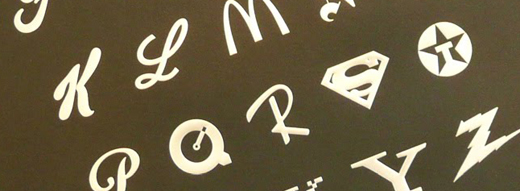Daily Office: Wednesday

¶ Matins: Confidence in the once-almighty dollar is eroding. This could be a very good thing, in many ways, if it weren’t for those pesky Treasury Bills.
¶ Lauds: On the strength of Ken Tanaka’s write-up, we’ve just ordered a copy of On City Streets: Chicago, 1964-2004, by “unknown” photographer Gary Stochl.
¶ Prime: The subprime movie crisis: surprise, surprise, easy money left Hollywood unprepared for a very dry season. (via Arts Journal)
¶ Tierce: Jason Dean’s very snazzy ABCs of Branding.
¶ Sext: Box wines: nothing to sniff at. (via Felix Salmon)
¶ Nones: The Honduran attempt at a bloodless coup is getting bloody — thanks to the return of the coupé.
¶ Vespers: Patrick Kurp waits, along with Phyllis McGinley, for “The 5:32.”
¶ Compline: Coming soon to the Internet: FTC disclosure rules.
Oremus…
§ Matins. It’s difficult to read the following without wanting to bash a certain somebody with a hot and greasy freedom fry:
Adding to the turmoil, a report on Tuesday in The Independent, a British newspaper, suggested that China, France, Japan and Russia were in secret talks with Persian Gulf countries to abandon the dollar for international trade in oil and replace it with a basket of currencies plus gold.
[…]
“It won’t be easy to make such a shift; it’s a pretty unrealistic idea in the near term,†said Qu Hongbin, an HSBC economist in Hong Kong. But in the years to come, he added, China would be delighted if it could print its own currency to pay for oil, instead of having to earn dollars through exports.
Any shift away from the dollar for oil trading, or for commodities more broadly, would seriously undermine global demand for dollars and strengthen the alternatives to it. This would make it harder for Washington to borrow overseas to finance its budget and trade deficits, and could fuel inflation in the United States.
§ Lauds. Mr Tanaka’s four points of good street photography are particularly memorable.
In his introduction Bob Thall presents an excellent academically-oriented explanation of why Stochl’s work is so good. He expresses particular surprise that Stochl could have become so skilled outside the confines of formal art education and the support of the art community. (I find this a bit humorous since I believe formal photographic education has not been a particularly positive or productive influence on photography. But I’ll leave that subject for another day.)
I can offer a simpler explanation for why Gary Stochl’s images have become my favorite body of street photography and my own gold standard. Yes, nostalgia and familiarity are factors. As a native Chicagoan and downtown resident I know, or remember, many of the images’ locations very well. In fact I am photographing at many of those same places nearly each week. But this work is not at all place-cast; even someone who’s never visited Chicago will likely find these images exceptional and often haunting. No, what makes this work so darn good is that it so perfectly embodies the four ingredients required to create good candid street imagery; an imaginative eye, the ping-pong timing reflexes to react to that imagination, the technical skill to actually use a camera to get the shot, and, most importantly, the courage to actually do it. Browsing through “street” galleries at photo sites such as Flickr will confirm that these are very, very rare qualities to encounter behind a lens.
§ Prime. The days of eager investors and avid DVD collectors are over.
“It does something radical to an industry when $12 billion to $14 billion suddenly goes away,” said Gill. “That places an enormous strain on the system. And nothing is replacing it. It used to be ‘let’s get the Germans’ and then the Germans went away, so it was ‘let’s get the Japanese’ or ‘let’s get the insurance companies.’ There was always going to be somebody else. Now it looks like it’s not going to be someone else.”
When times were flush, the studios spent like sailors on shore leave, handing out lavish producer deals, flying private jets, adding millions in overhead (including their own compensation) and pouring fortunes into poorly executed projects like Disney’s “Bedtime Stories” and Universal’s “Land of the Lost.”
§ Tierce. “Using no ink whatsoever, these posters are printed using a foil stamping and embossing process that I think fits the concept of looking at brand marks and type in general with a certain reverence (whether in a good or bad way). One is silver foil on black paper and one gold foil on cream, both stocks are French Pop-Tone.”

In other Tierce-type “news”: Why shouldn’t the Astor jury take 19 weeks to deliberate, and then climax in a mistrial? Fair’s fair.
§ Sext. The money saved on bottling can be spent on improving the wine itself.
The bag in box container costs less than $1, according to the Wine Spectator article, which automatically saves $4 to $8 compared with a similar quantity of wine in standard glass bottles and the box they come in. Shipping costs are also less since the boxes weigh much less than glass bottles for the same quantity of wine and are less likely to be damaged in transit. There are environmental benefits too, especially in areas where glass bottle recycling is problematic because the sour economy has undermined the market for recycled glass.Â
In the box, you’ll find a bag. But the large bags in which it is shipped are called “bladders.”
§ Nones. For nearly three months, Hondurans stumbled along more or less peacefully, despite international sanctions. Then the man in the straw hat snuck back into Tegus.
Since Mr. Zelaya’s return, security forces also have been rumbling through poor neighborhoods that are the base of his support. “They are going into neighborhoods in a way to intimidate people,†said Mr. Acevedo, the lawyer. In that time, the center has documented an increasing level of violence. Investigators have seen more than two dozen people with bullet wounds in hospitals, and some detainees have had their hands broken and have been burned with cigarettes, he said.
While the police and soldiers are looking for the activists who have been organizing resistance, the sweep seems to pick up anyone who gets in their way.
Roberto Micheletti has not been slow to point out that the Latin American human-rights watchdog is headed by a Venezuelan; the entire fiasco appears to have sprung from the spurned eminence’s fury at his protégé’s mad crush on Hugo Chávez,
§ Vespers. Then, by a natural association, he hops aboard “The Five-Forty-Eight.”
Except for the setting of a suburban train station (which McGinley and Cheever both describes as “shabbyâ€), and publication in the same magazine, the poem and story share nothing. Try to hold both works in your mind at once and triangulate the distance between them. They are the creations of two very different writers, of course, but more than 12 years of global war, Holocaust, atomic weapons and cold war separate them.
We don’t have the slightest difficulty holding both the poem and the story in mind, but then, we’re cheating: we grew up in the world of trains that departed from the Lower Level of Grand Central Terminal.
§ Compline. We heartily approve…
About three-and-a-half years ago Christine Young, of Lincoln, Calif., began blogging about her adventures in home schooling. It led to her current blog, FromDatesToDiapers.com, about mothers and families. The free products soon started arriving, and now hardly a day goes by without a package from Federal Express or DHL arriving at her door, she said. Mostly they are children’s products, like Nintendo Wii games, but sometimes not. She said she recently received a free pair of women’s shoes from Timberland.
Ms. Young said she had always disclosed whether or not she received a free product when writing her reviews. But companies have nothing to lose when sending off goodies: if she doesn’t like a product, she simply won’t write about it.
“I think that bloggers definitely need to be held accountable,†said Ms. Young. “I think there is a certain level of trust that bloggers have with readers, and readers deserve to know the whole truth.â€
… but we’re wondering about the books that we receive, slightly more often than once in a blue moon, from publicists. We usually call attention to that fact somwhere, but in the actual write-ups themselves. Happily, we have until December to device a policy for “clear and conspicuous” disclosure.
